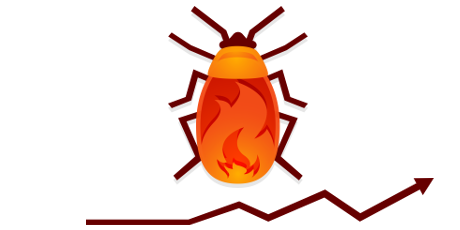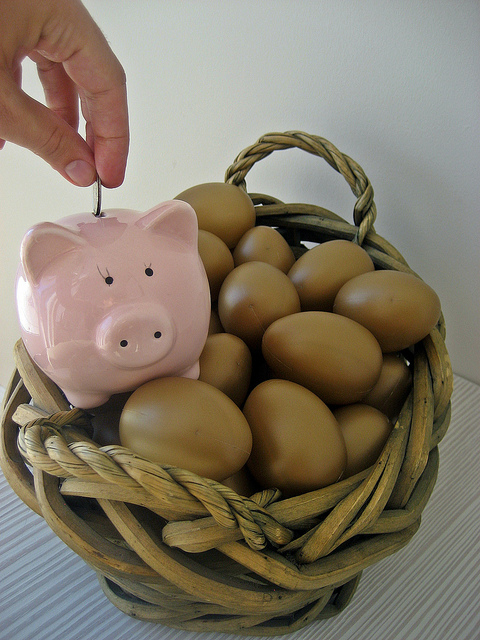
by Aussie Firebug | Oct 28, 2015 | Classics, Investing, Mindset
Until I discovered the concept of FIRE at around the age of 24, my life was on track to becoming pretty ‘normal’. What is normal anyway? I guess it’s what the majority of the people around you are doing?
The ‘normal’ where I live goes something like this:
> Go to school and study hard
> Go to either Uni or get a trade
> Get a job after you have finished your degree/trade
> Find a partner
> Get married
> Buy a home
> Have kids
> Raise kids for the next 20-30 years
> Start to seriously plan for retirement
> Spend the next 10 or so years adding to whatever nest-egg you have in hopes that you can retire soon
> If you’re one of the lucky ones you retire around 60 with enough investments to see you live comfortably for the rest of your life
This model of ‘normal’ usually involved around 40+ years of 9-5 full-time work.
Let me repeat that. 40 years of work…
When I first started working full time I was blown away by how much life you actually lose each week. I knew the hours and that you work Monday to Friday, but it wasn’t until I actually started work that I felt like so much of my life was being wasted. I didn’t even hate my job either, in fact, I quite liked it. But there were SO many other things I’d rather be doing than my job. I knew there had to be a better way. I just couldn’t accept that a human being living in one of the richest counties on earth is required to work the majority of the day for 5 days a weeks for 40+ years in order to finally retire. Which is when I started to learn more about investing and the concept of FIRE.
If you know anything about investing then you most likely have come across the term ‘compounding interest’. Albert Einstein is quoted to have said
“Compound interest is the eighth wonder of the world. He who understands it earns it … he who doesn’t … pays it.”
If Einstein is saying it’s the 8th wonder of the world than you know it’s some pretty epic shit.
Compounding interest is when your interest earns interest. It’s basically like a big snowball that gathers more and more snow as it rolls down the hill. To get this snowball started you need to supply your own snow. But once you have ‘something’ started then the snowball will roll down the hill gathering little bits of snow along the way (your gains).
After a year of your snowball rolling down the hill slowly collecting other bits of snow, you discover that it’s grown by 5%. Because your snowball is now a bit bigger, the following year it gains even more snow since as it can cover more ground now. This has a flow on effect and after years of rolling down the hill, the snowball has grown to such a size that the amount of snow it can now collect after just a single year of rolling is enormous.

There are two critical components to compounding interest, the initial amount you start with and the time in which you start.
Let’s consider two different examples:
Mike is 25 and he decides to place his life savings of $50K into a savings account that returns 9% per year compounding annually (meaning that the additional interest is paid every year). He makes a promise to himself that this money will be used for his retirement and he must never touch a single dollar of it until he reaches 60.
Ben is also 25, but retirement to him is so many years away that it’s not remotely on his mind. He knows that one day he will probably need to save for retirement as he doesn’t trust that the government will be able to look after him once he can’t work anymore. Ben puts retirement on the back burner and YOLO’s through his 20’s, settles down in his 30’s and has kids.
The years fly by and suddenly Ben is 50. Ben and his wife start discussing retirement seriously and decide to start putting away a decent chunk of their income each year into a similar savings account that Mike used, this account also returns 9% per year compounding annually. Since Ben and his wife started their retirement account later in life they now have to sacrifice their lifestyle and scrap together all the spare change they can get. They miraculously are able to save a whopping $50K each year to add to their retirement fund.
Lets recap for a second. Mike invested a once-off lump sum of $50K at 25 while Ben and his wife invested a total of $500K ($50K X 10 years) between 50 – 60 years of age. Let’s compare how much money they have when they both turn 60.
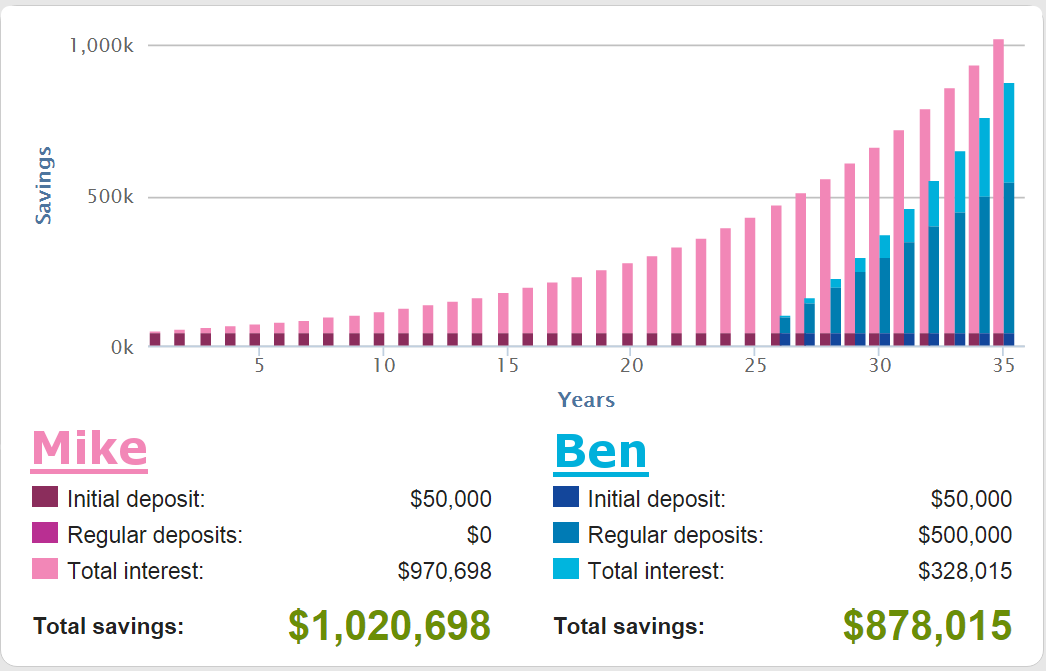
Mike is represented by the pink columns and Ben and his wife by the blue ones. Mike ends up with over a million dollars in his account with Ben trailing by over $100K on $878K. Keep in mind that Mike made a once-off departure with $50K at 25. T
hat’s it.
He also YOLO’d his way through the rest of his life, he didn’t have to save a cent past 25, he didn’t have to sacrifice his lifestyle for 10 years saving $500K and yet he STILL came out over $100K ahead of Ben when they reached 60.

Mike had the power of compounding interest working for him for 35 years. During that time, his $50K nest-egg grew from $50K to over $1,000,000 dollars without him ever having to add or do anything to it.
Historically the S&P 500 Index has returned 9.04% with dividends reinvested so you might not be able to find a savings account that’s going to give you 9% (you won’t) but it is entirely possible that you could have invested $50K and have it return something close to 9% over 35 years. What I’m trying to say is that Mike’s story is entirely achievable. Yes, I left out a lot of things (market swings, inflation, income growth etc.) but fundamentally, if you start young and let father time do the hard lifting for you, It’s 100% possible to build a small fortune with little to no effort thanks to the power of compounding interest.
A Final Thought
I hope that you now fully appreciate the awesome power of compounding interest and how it can work in your favor. I think that the majority of people are doing it wrong when they hold off saving for their retirement. You should start young and be consistent with small amounts rather than trying to play catch up later in life. Get the snowball rolling now not later!
PS* The above graph was made from the smartmoney.gov.au site which can be found here. It’s a really great calculator that lets you compare two different strategies. Have a play with it and you will be astonished at some returns you can end up with if you invest early and consistently.
Photo credit: 401(K) 2013 / Foter / CC BY-SA

by Aussie Firebug | Oct 21, 2015 | Classics, Investing, Real Estate
With my most recent purchase of property number 3 I thought it would be a good chance to clear up any misconceptions about how much it really costs to buy a property and what are the hidden fees, extras and everything else involved right from step 1 to getting the keys.
Purchase Price
The most important part of the transaction. The purchase price is where you can really set yourself apart from an investor that knows what they’re doing as opposed to the investing n00b that rolls into a Metricon display home and picks a house off the shelf (this was actually me on my first IP LOL). It’s probably the most important part of property investing, sure you make a woad of cash over the years as compounding interest does its thang. But to really steamroll ahead in the investing game, getting a bargain on each property you buy is vital. It not only gives you a buffer in place in case you had to sell, but more importantly you will see growth WAY sooner than if you bought like 80% of people do, at market value or over.
Yes, I know what some are going to say “Whatever you buy at IS the market price”. True to an extent, but what really matters is how much the bank values the property at. And they usually undervalue the property a tad to mitigate their risk. So if the banks valuation comes back higher than what you paid for it, well done!
Deposit
The big one. All that hard work and years of savings form your deposit. How much deposit do you need though? Everyone has a different opinion on this one but here’s my take.
If you’re buying a home to LIVE in and not to invest then how big a deposit you put down doesn’t really matter. You probably want to avoid lenders mortgage insurance which is an insurance you have to pay for the bank when your deposit is less than 20%. Isn’t that funny? The banks see less than 20% deposits as high risk so they rightfully take out insurance to cover themselves in case you default on your loan. If that was to happen, the banks would get paid out by their insurer and the insurer would then come after YOU! The funny thing here is that you have to pay for the banks insurance. Imagine if every landlord started charging each tenant-landlord and home insurance because they see them as high risk. It just wouldn’t happen. But the banks have the mula $$$ and they make the rules. So us mere peasants just have to cop it on the chin…OR place down a 20% or bigger deposit.
If you are investing in property however my view on this is a bit different. You can put down less than 20% and pay the extra in fees (thousands of dollars extra depending on the size of the loan and your deposit %) if you are desperate to get into the market because you think it’s rising faster than you can save. For example, lets say that you want to buy an IP for $400K which would require a deposit of $80K (20%) but you only have $60K right now. A year passes by and now you have the extra $20K but now you discover that houses are selling for $500K instead, that means you would now need an extra $20K for your deposit. If you had bought the property at the start with a lower deposit, you would have had to pay the LMI but you would have seen a $100K increase in equity after one year which easily offsets the pain of paying the LMI.
Paying LMI in this case is beneficial but if the value of the property doesn’t rise then you will be stuck with a property with a loan to value ratio (LVR) of greater than 80%. The issue with having a property with an LVR of greater than 80% is that if you want to pull out equity, lets say upto 90% LVR you will have to pay LMI again 😐 . This actually happened to me on my first IP and was quite a shock. I’d already paid LMI to purchase the property but then they slugged me AGAIN when I pulled out equity. Lesson learned. I now only withdraw equity when my property is less than 80% LVR. The banks (my bank at least) allows me to pull out equity up to 80% LVR with no charge attached and it’s a pretty straightforward process.
I put down 20% for each IP that I buy these days but I don’t put down any more than that. Why? Because a 20% deposit I feel is the sweet spot for not only dodging such extras as LMI but also providing a big enough buffer in case anything went wrong and you had to get out.
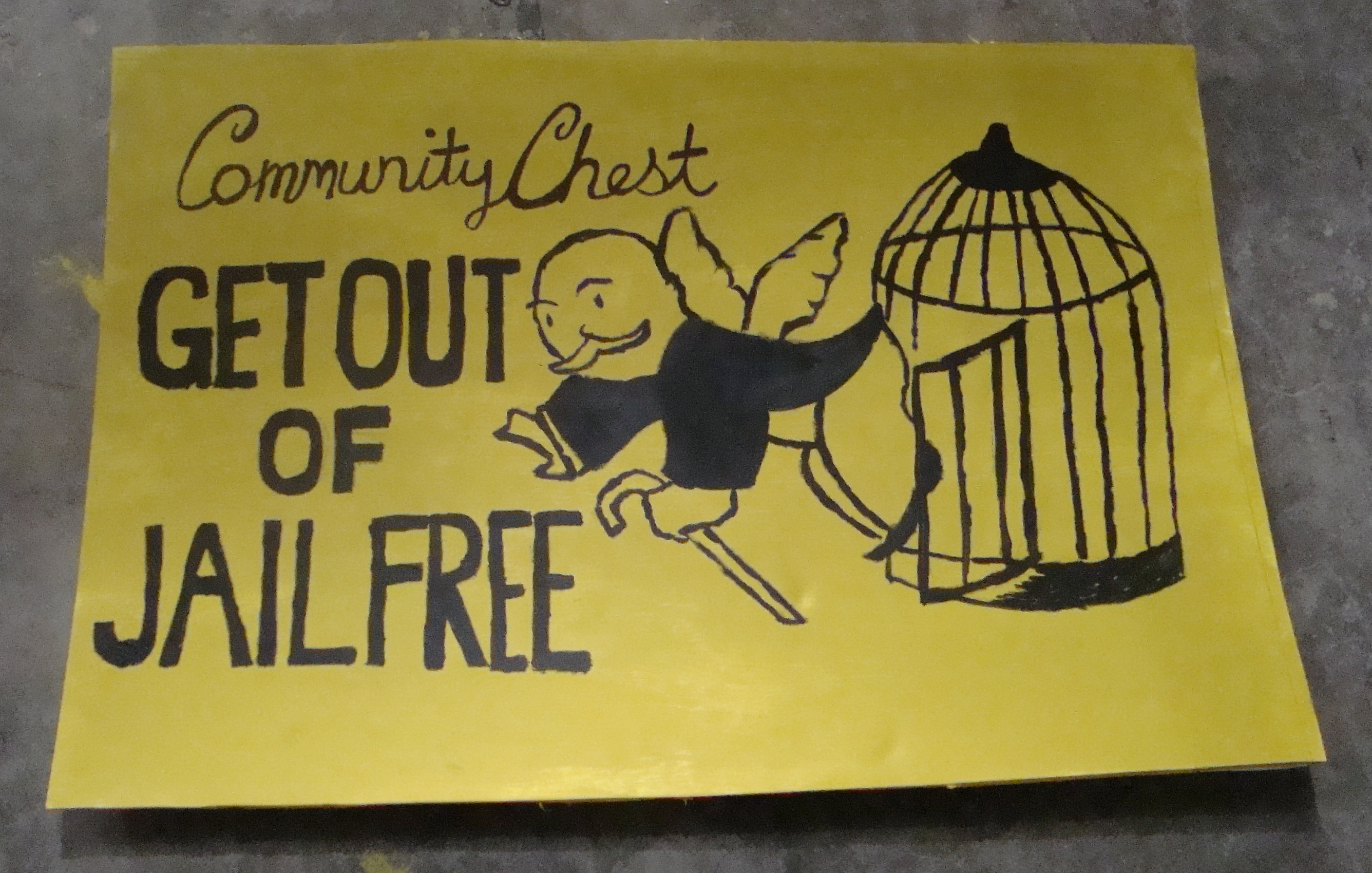
Some people say the bigger the deposit the better. I disagree. One of my favourite ways to evaluate a property (or any investment) is to calculate the cash on cash (COC) return. The formula looks something like this:
COC = (INCOME-EXPENSES) ÷ CASH INVESTED
I like it so much because it can tell you how quickly you are going to get back your initial outlay that you parted with to buy the investment to begin with. Using this formula you can work out that it is not always the best idea to put down a bigger deposit. Lets for example say that you are looking at purchasing a positively geared house in the country that doesn’t have the brightest future for capital growth but has a really strong rental yield. The purchase price is $170K (yes these houses do exist if you look outside of capital cities) and it is currently tenanted at $290 P/W. Rounding the figures off lets just assume that all the expenses including interest, rates, water etc. all add up to be $9K P/Y. That’s roughly $15K a year from rent and expenses of $9K, which is fantastic positive cash flow straight off the bat of $6K P/Y. Lets say you purchased this deal with a 20% deposit. At 20% deposit you are forking out $34K plus 5% overall buying costs which brings you up to $42.5K OVERALL cash invested. If we plug that into the formula
COC = $6K ÷ $42.5K
COC = 14%.
Assuming no capital growth and not adjusting for inflation this means that at the current rate of return with all things being the exact same, I will get back my initial capital that I invested into this asset back after roughly 7 years. Every $ after those 7 years is pure profit. Now lets change the deposit size and see what happens to our COC return. Let say I was to only put a 10% deposit down instead of 20%. I’m now paying an extra $850 (assuming interest rate @ 5%) bucks each year because my loan is bigger and lets say LMI is going to cost me $3K. My cash flow now changes from 6K P/Y to $5.15K but my total cash invested also changed from $42,5K to $28.5K. So if we now plug those figures into the COC formula we then get the following
COC = $5.15K ÷ $28.5K
COC = 18%
The higher the COC percentage the quicker you get back the money that went into any investment. We could do the formula again with 0% deposit (banks don’t currently let you do this now, they did once upon a time) and the COC would be even bigger, sometimes over 100% meaning you’re making real money from the very get-go.
It’s all about how comfortable you are with risk. I’m not saying to put down the smallest deposit possible I’m just saying that purely from a mathematical point of view you are not always better to be putting down 30% to 60% deposits when you’re investing in real estate. If you want a place to live in then it’s different because your primary goal is not to make money. But if you are looking to make money from investing in property then there are better ways to do it then to put down a big 40% deposit on a property that’s going to take 40 years to generate enough income just so you can be back at square one from where you started from.
Buying Costs
This will vary on a number of things but I have used the 5% rule in the past and it has been pretty much spot on for all three of my properties so far. It’s pretty simple really. 5% of the purchase price is usually what it’s going to cost you to buy the property. This covers everything like building and pest inspections, stamp duty and legal fees. It’s a bitter pill to swallow sometimes because if you are buying a property worth $500K, using the 5% rule would mean you are paying $25K just to own this asset. That’s a LOT of money just to buy something which is why a lot of property investors don’t like selling once they have bought. It’s expensive to get into the market and even more so sometimes to exit. I would have to agree with this mantra. You lose enough money as it is through buying fees let alone selling ones. Below is my actual buying costs of the latest property to give you an idea not only of the prices but also the timelines on which I had to pay them. FYI the purchase price was $250K
| Date |
Expenses |
Notes |
| 27-Jul-2015 |
$1,000.00 |
Initial deposit |
| 29-Jul-2015 |
$400.00 |
Building and Pest inspection |
| 11-Aug-2015 |
$11,500.00 |
More of the deposit |
| 2-Sep-2015 |
$7,175.00 |
Stamp Duty |
| 16-Sep-2015 |
$37,900.25 |
Rest of Deposit |
| 16-Sep-2015 |
$2,078.83 |
Legal and conveyancing fees |
| 25-Sep-2015 |
$200.00 |
Settlement Fee |
| 25-Sep-2015 |
$728.40 |
Land Titles Office |
| Total |
$60,982.48 |
|
Conclusion
From my experience, I have found that I can quickly and easily work out how much it’s going to cost me to buy a property using the 5% rule and 20% of the purchase price. For me, it works out to be 25%. The 5% rule can be applied for most purchases but the other major part to the buying cost is the deposit which will differ from person to person. Do you always aim to put 20% deposit down? Maybe more? Maybe less? I’d like to know your reasoning behind it in the comment section below.
by Aussie Firebug | Oct 13, 2015 | Net Worth
Firstly I would like to say that it has been quite some time since I have posted anything. This is because I just got back from an international holiday which involved an annoying large amount of ‘activities’ instead of relaxing which I had plan to use to write a few posts. Any-who! A few things have changed.
Firstly you may have noticed that I have removed my car from my net worth. It really shouldn’t have been there in the first place. Any depreciating asset has no business to be considered part of my portfolio. Which leads me to another controversial part of the portfolio…Super. Should I or shouldn’t I include my Super as part of my portfolio? I changed my mind on this a couple of times. As I plan to retire young, Super does not help me achieve this goal as should be separated from my ‘real’ portfolio which will be used to calculate my real net worth position. However, I’ve decided to keep my Super in my portfolio for this blog purely for the readers to see. In my own spreadsheets I have removed it but for the purpose of transparency I will keep it in here for all you readers to see it. Speaking of which, I checked my Super and it’s up $5K (mostly contributions from my employer) since the last time I checked it.
I bought property number 3!!! Exciting times. Everything went really smoothly and I’m happy with the results so far. Starting to really gather momentum with the properties as half of this one was funded by equity from my other two. I hope I can reach a stage eventually where I can simply wait a year or two and just pull equity to buy the next and so on.
And lastly, one of my properties went up by $4K during the purchase of IP number 3!
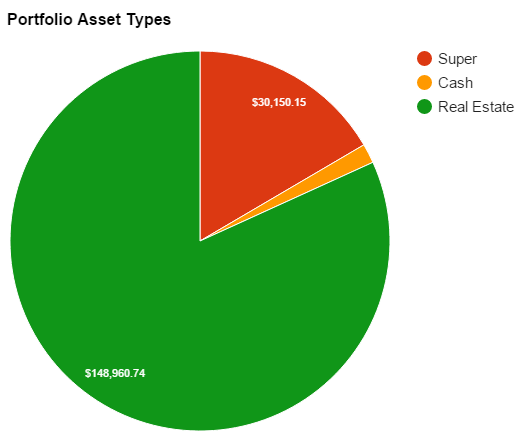

| Date |
Rolling NetWorth |
$ Change |
% Change |
Notes |
| 1-Jan-2011 |
-$36,000.00 |
$0 |
0.00% |
HECCS debt |
| 1-Jan-2012 |
-$32,000.00 |
$4,000 |
0.00% |
Started Full-time work late Nov |
| 1-Jan-2013 |
$20,000.00 |
$52,000 |
0.00% |
Built property and recieved FHOG ($21,000) |
| 1-Jan-2014 |
$45,000.00 |
$25,000 |
125.00% |
|
| 1-Jan-2015 |
$83,254.21 |
$38,254 |
85.01% |
Bought second IP |
| 17-Feb-2015 |
$110,215.44 |
$26,961 |
32.38% |
|
| 18-Feb-2015 |
$121,541.41 |
$11,326 |
10.28% |
|
| 4-Mar-2015 |
$123,715.44 |
$2,174 |
1.79% |
|
| 18-Mar-2015 |
$122,128.44 |
-$1,587 |
-1.28% |
Paid for holiday |
| 15-Apr-2015 |
$125,906.00 |
$3,778 |
3.09% |
Withdrew equity from property |
| 14-May-2015 |
$127,906.96 |
$2,001 |
1.59% |
|
| 18-Jun-2015 |
$131,904.96 |
$3,998 |
3.13% |
|
| 21-Jun-2015 |
$152,904.96 |
$21,000 |
15.92% |
IP’s revauled |
| 12-Jul-2015 |
$159,904.96 |
$7,000 |
4.58% |
Paid 4K off HECS Debt |
| 23-Jul-2015 |
$161,904.96 |
$2,000 |
1.25% |
|
| 31-Aug-2015 |
$167,904.96 |
$6,000 |
3.71% |
|
| 31-Sep-2015 |
$170,110.89 |
$2,205 |
1.31% |
Car went out of Portfolio, Bought IP 3, Super went up and one IP went up |

